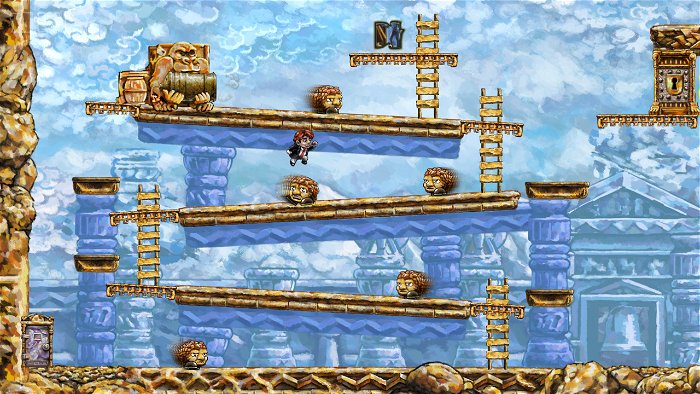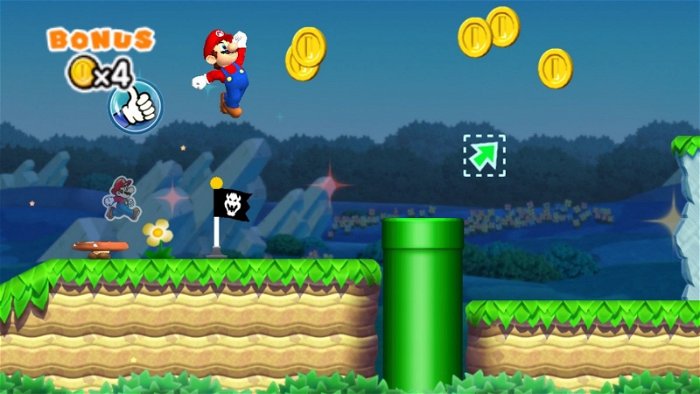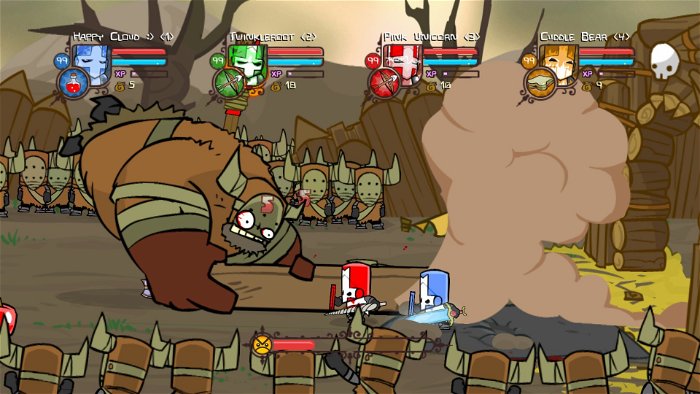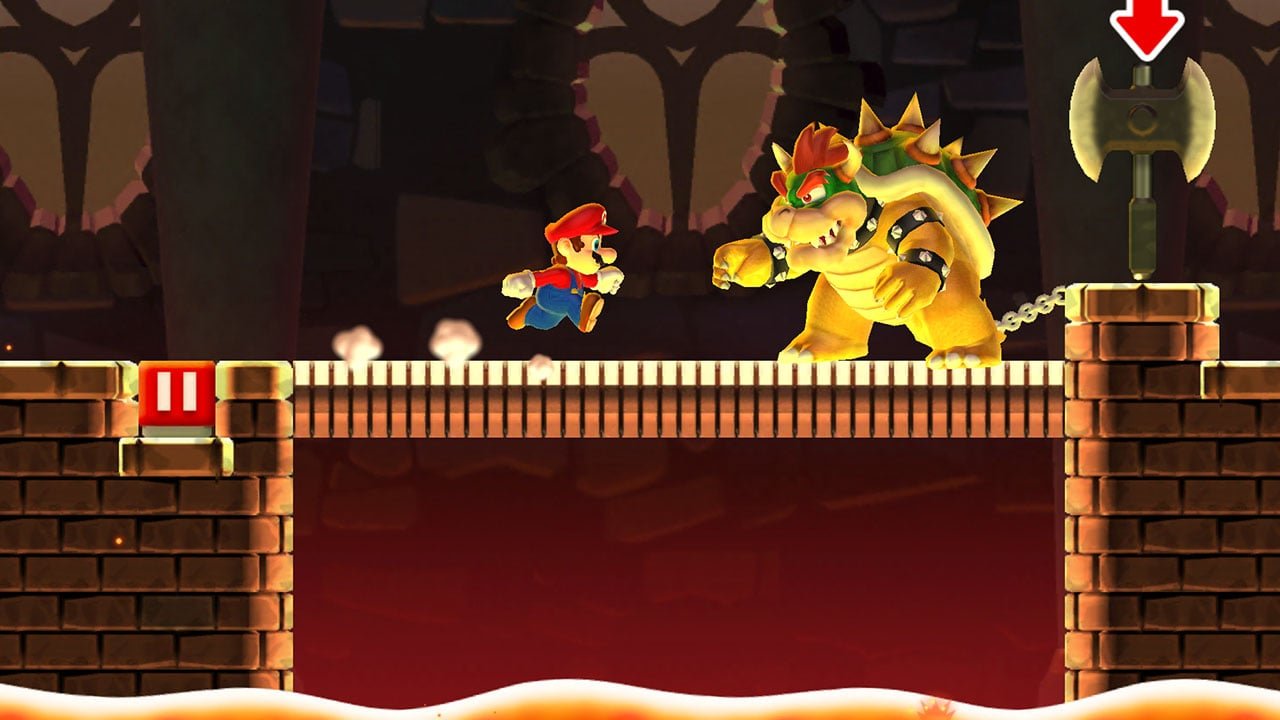The incredible story of Xbox 360’s XBLA network can be seen as an allegory for what might happen to mobile gaming with the launch of Super Mario Run—it’s November 22, 2005, and Xbox Live Arcade launches on the Xbox 360. The following years hold cries and chants of “this is only for mini-games!” XBLA’s downloadable games are for “lesser” experiences, five-minute pastimes; glorified flash games. Ask someone about the games they know on the network, and they’ll say Bejeweled, Marble Blast, Geometry Wars. Ask them if they can find a triple-A experience from the platform, and they’ll scoff. Now fast forward to August 2008. Braid and Castle Crashers release, and it is a two-hit atom bomb that radiates across the entire spectrum of the gaming community. Braid is lauded as a work of art that can touch the soul, and Castle Crashers as the best couch co-op experience in years. The world of downloadable games, and games as we know it, is changed forever.
Double jump to today: Super Mario Run launches on iOS devices. The game that boasts a complete Mario experience (as opposed to being an ancillary cash cow) has a successful launch when it tops charts. Though the reception is mixed. A fissure between critics and consumers, along with reports of crashes and other technical obstacles, plunges the game from the charts two weeks from release. Super Mario Run receives a 2.5 star average rating on the App Store, and is perceived as a failure of expectations. But why the game was perceived so poorly (yet was reviewed quite well) may not be the fault of the product, but rather, of people’s own preconceptions of what mobile gaming is as a platform. Angry Birds, Clash Royale, Bejeweled. “History repeats itself,” “time is a flat circle”; use whichever idiom you please, but it is clear to see that pre-Braid XBLA is a good model for what is happening in the mobile space.

As Braid and Castle Crashers broke the misconceptions of the downloadable title, Super Mario Run may be the first to do so in the mobile space. But admittedly, the game is not the first attempt by a big name developer to shatter such expectations. Epic paved the way in that regard with their high-profile series, Infinity Blade, first released through the App Store in 2010. Mario Run is novel in that it realizes the potential of the platform in a way that Chair didn’t. Nearing the completion of the iOS iteration of the Unreal Engine 3 graphics engine, Apple needed a killer app to display at their 2010 keynote. As a result, Chair was asked to create Infinity Blade, a game that started out as a tech idea for the Xbox 360’s Kinect. The developers created a playable demo in eight weeks for the Apple keynote, and within another three months, had the game shipped. Donald Mustard, the creative director on the project, would later comment to pocket gamer, “We’d never made a game so fast.” Infinity Blade was wildly successful and had clever ideas on how to tune a game to the mobile experience, but the game never truly exceeded its original intentions of being a graphical showpiece for the iOS. Its simplistic and reductionist mechanics are fun, but don’t parallel the comprehensive experience that Braid brought to its respective platform. Try comparing Infinity Blade with experiences like Dark Souls, and it’s like comparing House of the Dead with Resident Evil 4. Similarly, the other slew of big production games currently out right now are also half-efforts; you play Vainglory because you’re not at the computer to play League of Legends; you play Final Fantasy: Brave Exvius because you can’t play I Am Setsuna; you play Bladebound ‘cause you can’t play Diablo.
The seriousness with which Nintendo looks at mobile, then, is antithesis to the story of Chair and Epic. Rather than commissioning a 3rd party acquisition, Nintendo had Shigeru Miyamoto himself closely leading Super Mario Run’s development, marking the first time he did so on a Mario game since 2007’s Super Mario Galaxy. Miyamoto initiated in-depth inquiries into the platform before ever even designing for it. From the get go, Miyamoto knew he had to be “creative with Mario, and design for iPhone in a way that takes advantage of the uniquenesses of that device and the uniquenesses of that input and the features that that device has,” as told in an interview with Wired. The veteran designer says that he looked at speedrunners to draw inspiration for the game’s core mechanic. “When you look at videos of super players who are very good Super Mario Bros. players, they tend to run all the way through the course without ever stopping,” Miyamoto told Wired, unlocking an inherent component already embedded in Mario’s lineage. It is a way “to create something that’s simple and easy for anyone to play, but still has some of that challenge and skill that super players desire” he continued.

Unlike other endless runners, Super Mario Run’s endless running mechanic serves as a beating heart around which the rest of the game is deliberately crafted. Rather than having randomly generated gauntlets meant to mine a player’s time and money, Mario Run’s levels are layered, handcrafted, and definitive. The levels take multiple playthroughs to fully explore, like in any other Mario game, and include complimentary mechanics such as direction reversal and a rhythm based style that has its roots in the Wii. “We had experiments back then where you would make Mario jump in time to music. Though those experiments never made it into the game until now” Miyamoto told BuzzFeed in another interview about the game.
The problem with the reception of the game doesn’t seem to lie in the game itself, but in its distribution choices. A look at the user reviews on the App Store shows that the majority of them are complaints of the $10 cost, not of the content. In a report by SuperData Research, a games and interactive media intelligence company, they found that “Consumers spent $41 billion on mobile games in 2016,” nearly half the market share of the $91 billion industry. So it’s no wonder that a new model that is decidedly anti “freemium” would have to go through some experimentation before it finds the right pricing strategy within the freemium sea it was dropped in. Nintendo proved they are doing just that, considering they have been sending email surveys to Super Mario Run players asking questions like how much players are willing to pay for the game. The information that they gather will likely be implemented into the monetization model of their next two mobile games Fire Emblem and Animal Crossing, which were announced to be “free-to-download.” On the other hand, maybe Mario Run is doing better than perceived, considering that in Q2 2016 alone, Android held a 86.2 per cent worldwide market share compared to 12.9 per cent for iOS, according to a figure published by 9to5Mac. Super Mario Run has already generated around $3 million solely on the iOS, giving it a positive outlook for when it penetrates nearly 90 per cent of the remaining market upon its Android release.
As console gamers don’t get a lesser experience with its eight face-buttons in comparison to PC’s 104 keyboard presses, Nintendo seems keen on proving mobile games don’t either. This spirit is reflected in the words of Takashi Tezuka himself, the game’s lead designer, who said in a Bloomberg interview “I have never consciously separated casual users and hardcore gamers when I design a game. For the past 20 years, I have always been trying to make games so that anyone—as many people as possible—can enjoy them… ” Evidently, that doesn’t exclude the mobile platform. With big names like Level-5 in tow, who are developing their next two games, Fantasy Life 2 and Lady Layton exclusively for mobile, Nintendo leads an unprecedented commitment to the mobile platform. Super Mario Run’s confused reception may have proved that the mobile story will not be one of the instant success like Braid or Castle Crashers was, but one of the straw that broke the camel’s back.

In any case, it is leadership that will propel the platform forward into the next era—leadership from the creators and from the people. Like the leadership found in the story of Xbox Live Arcade’s green light told in an interview with Kinda Funny games by Greg Canessa, the creator of XBLA himself. Canessa was sitting next to a Robotron: 2084 machine in J. Allard’s office, the man in charge of the Xbox Live software development team, when he made the pitch. It was December 10, 2004—a Friday. And when he argued for the integration of XBLA into the Xbox Live dashboard, the kneejerk response by one of the other execs in the room was, “Hey, um, I don’t have time for this. This is cool, but we’re out of time. We don’t have any of this stuff. I can’t do this. No.” They were a mere eight months away from software launch and Canessa had faced many rejections by other Xbox execs up to that point. But Allard looked at Canessa—who will never forget it—and thought for a moment. He looked out the window, and said, “No, this is actually something we have to do. This is a key part of where we want to go with Xbox Live. You will figure out how to get this done. Greg, you will make this happen.”
The story of XBLA was one of heroism and great leadership and it is high time mobile gaming’s story of triumph is written into the history books as well, by Nintendo or otherwise. When Canessa was asked how he felt when Allard gave him the green light, he simply said, “At the time, I just felt relieved.”




